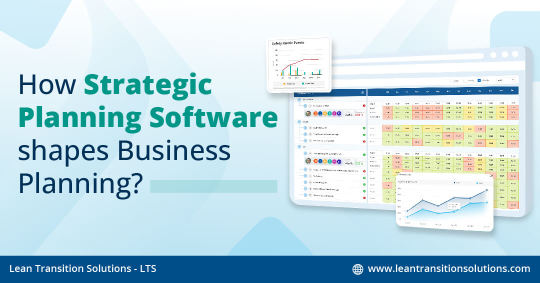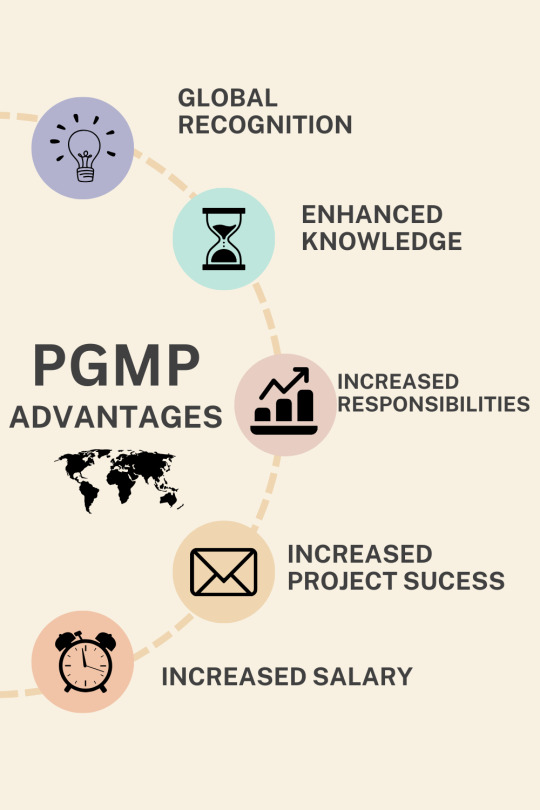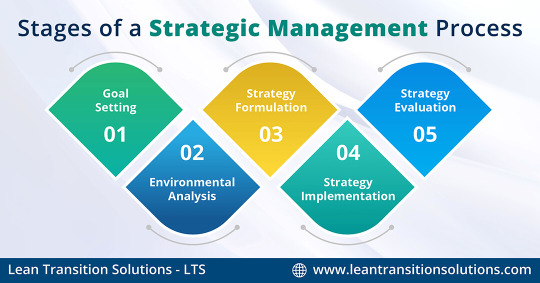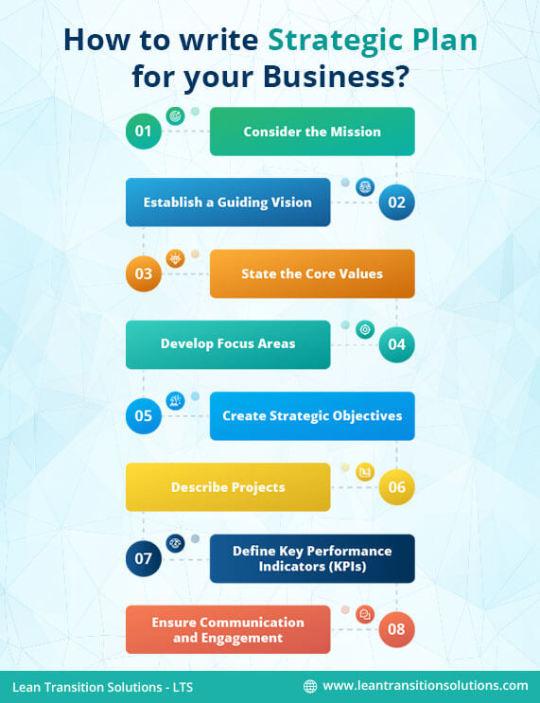#strategicalignment
Text
How Strategic Planning Software shapes Business Planning?
Strategic planning software helps businesses in goal setting, executing strategic plans, tracking and reporting KPIs for aligning organisational goals & objectives.
Read More on: https://balancedscorecard.ltslean.com/software-blog/strategicplanning-software-for-businessplanning

#balancedscorecard#strategy#strategicplanning#strategyexecution#strategicmanagement#strategyteam#cascadingstrategy#strategicalignment#businessstrategy#corporatestrategy#scenarioplanning#strategicthinking#procurementstrategy#strategicleadership#strategicbusinessplan#corporateplanning#competitivemarketanalysis#businessstrategyplan#operationsstrategy#strategicthinkingskills#creatingastrategicplan#strategydevelopment#lean#leantransitionsolutions#lts#industry4.0#continuousimprovement#leanmanufacturing#datapoint#visualmanagement
0 notes
Text
Discover how Master Data Management (MDM) revolutionizes enterprise data practices, ensuring accuracy, governance, and strategic alignment
#MasterDataManagement#DataManagement#MDM#DataQuality#DataIntegration#DataGovernance#EnterpriseData#DataTransformation#DataEnrichment#DataAccuracy#StrategicAlignment
0 notes
Text
Unlocking Procurement Excellence through Category Management
Originally Published on: SpendEdge |Unlocking Procurement Excellence through Category Management
Category management, a strategic approach to procurement, has emerged as a pivotal tool in optimizing organizational spend and driving value creation. By systematically grouping goods and services into categories based on shared characteristics, market dynamics, and supply chain complexities, category management enables procurement teams to adopt a more focused and efficient approach to sourcing, negotiation, and supplier relationship management. This essay aims to delve into the role of category management in procurement optimization, exploring its benefits, best practices, and challenges.
The Foundations of Category Management
Category management is predicated on the principle that procurement activities are most effective when approached as a series of individual business units. It entails the segmentation of spend into distinct groups, allowing procurement professionals to analyze, understand, and effectively manage each category to drive efficiency and cost savings. By treating each category as a distinct entity, procurement teams can apply shared best practices and policies, enhancing efficiency and effectiveness.
The Benefits of Category Management
Increased Visibility and Control:
By grouping products and services into categories, procurement teams gain a clearer view of where the organization’s money is going, enabling them to identify potential savings and investment opportunities.
Enhanced Supplier Relationships:
Category management fosters stronger relationships with suppliers, allowing for collaboration, innovation, and cost savings.
Improved Decision-Making:
Category management provides a structured framework for making procurement decisions based on data and market insights.
Reduced Risk:
By identifying and mitigating risks associated with specific categories, procurement teams can minimize the impact of supply chain disruptions.
Increased Efficiency:
Category management streamlines the procurement process, enhancing efficiency and effectiveness.
Best Practices for Category Management
Define Clear Category Boundaries:
Establishing clear boundaries for each category ensures focus on the right products and services.
Conduct a Thorough Category Analysis:
Analyzing each category in detail identifies opportunities for cost savings, risk mitigation, and strategic alignment.
Develop a Category Strategy:
Outlining goals, objectives, and key performance indicators ensures focus on the right products and services.
Establish a Category Team:
Ensuring necessary expertise and resources are available for effective category management.
Implement a Category Management Process:
Following a structured approach to managing each category ensures consistency and efficiency.
Monitor and Evaluate Category Performance:
Regular performance reviews ensure alignment with goals and objectives.
Challenges of Category Management
Resistance to Change:
Implementing category management can face resistance from stakeholders accustomed to traditional procurement methods.
Lack of Resources:
Challenges may arise due to a lack of expertise, technology, and funding.
Complexity of Supply Chains:
Managing complex supply chains presents challenges due to various influencing factors.
Data Quality and Availability:
Access to accurate and reliable data is essential for making informed decisions.
Organizational Alignment:
Ensuring alignment with strategic goals and objectives maximizes the benefits of category management.
Conclusion
Category management is a powerful tool for optimizing procurement and driving value creation. As organizations navigate the complexities of global supply chains, category management will play an increasingly important role in optimizing procurement and driving value creation.
Contact us.
0 notes
Text

Agreementpaper - The Seven Deadly sins of Strategy
Why do strategies often face failure in their effective execution? Here are the seven common pitfalls of strategy implementation: 👉
- Death by Planning: Overemphasizing analysis and planning at the expense of delivering the strategy.
- Loss of Focus: After the initial introduction, attention to the strategy diminishes as individuals return to business as usual.
- Reinterpretation: Adoption of new strategy terminology without actual changes in actions, essentially describing existing practices.
- Disconnectedness: When top management's perception of reality differs significantly from that of managers and employees down the line, creating a disconnect.
- Behavioral Compliance: People mechanically follow what is asked of them without truly embracing the new strategy.
- Misreading Resistance: Blaming employees for resisting change without addressing underlying issues such as unclear strategy or lack of explanation.
- Broken Agreements: Management verbally supports the strategy but undermines it through their actions.
Can you think of any additional challenges?
#StrategyFailures#ExecutionPitfalls#agreementpaper#DeathByPlanning#LossOfFocus#ReinterpretationRisk#DisconnectednessIssues#BehavioralCompliance#ResistanceMisreading#BrokenAgreements#ImplementationChallenges#StrategicAnalysis#PlanningVsExecution#AttentionDeficit#TerminologyMisuse#RealityPerceptionGap#EmployeeEngagement#ClearStrategyNeeded#ManagementActions#StrategicAlignment#EffectiveExecution
0 notes
Text
The meeting agenda that works consistently… EOS for the win
youtube
Uncover the secret to consistently effective meetings with "The Meeting Agenda That Works Consistently... EOS for the Win" by Marcio Goncalves. Dive into the world of Entrepreneurial Operating System (EOS) and discover a proven agenda that streamlines meetings, fosters collaboration, and drives results. Goncalves provides invaluable insights to help organizations implement EOS successfully, ensuring meetings become a powerhouse for productivity and strategic alignment.
#EOSforSuccess#MeetingAgenda#ProductiveMeetings#StrategicAlignment#BusinessOperations#EntrepreneurialMindset#CollaborativeWork#LeadershipStrategies#BusinessEfficiency#MarcioGoncalvesEOS#Youtube
0 notes
Text

"PGMP, or Program Management Professional, is an advanced certification offered by the Project Management Institute (PMI). Tailored for experienced program managers, PGMP signifies a mastery of program management principles, strategic alignment, and stakeholder engagement.
https://www.knowledgewoods.com/project-management/program-management-professional-(pgmp).html
#PGMP#ProgramManagement#PGMPCertification#ProjectManagementInstitute#PMI#ProgramManager#StrategicAlignment#StakeholderManagement#ProgramLeadership#ProfessionalDevelopment#CareerAdvancement#ProjectManagementProfessional#PGMPBenefits
0 notes
Text
Optimizing IC Structures for Different Pharma Sales Roles: Sales Reps to Regional Managers
In the intricate pharmaceutical sales realm, optimizing incentive compensation (IC) structures symbolizes success. This artistry involves crafting unique IC plans that cater to the diverse roles within the sales hierarchy, from dedicated sales representatives to visionary regional managers. This blog delves into optimizing IC structures for different pharma sales roles: from sales reps to regional managers.
Write to us at [email protected] to delve into optimizing IC structures for different pharma sales roles: from sales reps to regional managers.
Understanding the Sales Symphony
Just as a symphony requires different instruments playing in harmony, pharmaceutical sales thrive when each role contributes to a unified melody of success. Optimizing IC structures is the key to orchestrating this harmony.
The Craft of Customization
Optimizing IC structures begins with the craft of customization. Each sales role has distinct responsibilities, challenges, and contributions, and their IC plans must reflect this uniqueness.
Tailoring IC for Sales Representatives
For sales representatives, IC plans often center on individual performance. Rewarding achievements, such as meeting sales targets, building strong client relationships, and product knowledge, ensures they are motivated to excel.
Balancing Individual and Team Goals
Sales team leaders require a balanced IC structure that rewards their individual achievements and leadership skills in guiding their team toward success.
Empowering Area Managers
Area Managers play a pivotal role in coordinating sales efforts. Their IC structure should encompass team performance, sales growth, and strategic leadership, encouraging them to drive excellence across regions.
Strategic Alignment for Regional Managers
Regional managers hold a strategic compass, guiding sales operations across broader territories. Their IC structure may focus on holistic performance, market expansion, and fostering cross-functional collaboration.
Metrics that Matter
Optimized IC structures hinge on meaningful metrics. Each role's compensation should mirror the key performance indicators that drive success, from sales representatives to regional managers.
Flexibility and Adaptability
In the ever-changing pharmaceutical landscape, flexibility is vital. IC structures should evolve to accommodate shifts in market dynamics, regulatory changes, and emerging opportunities.
Communication and Transparency
Clear communication is the foundation. Ensuring each sales role understands its IC structure, objectives, and mechanics cultivates transparency and trust.
Performance Reviews and Feedback
Regular performance reviews are essential. Providing timely feedback to sales representatives, team leaders, area managers, and regional managers helps align their efforts with IC objectives.
Incentives Beyond Money
While financial incentives remain important, non-monetary rewards like career growth opportunities, skill development, and recognition contribute significantly to optimizing IC structures.
The Bigger Picture
Optimizing IC structures isn't just about numbers; it's about nurturing a culture of excellence. It's the collective commitment of each sales role working harmoniously to achieve overarching business objectives.
Conclusion
In the complex world of pharmaceutical sales, optimizing IC structures is the key to success. It involves sales representatives, team leaders, area managers, and regional managers working together in a synchronized performance guided by strategic alignment, customization, and recognition. This art weaves together motivation, expertise, and shared aspirations, creating a tapestry of achievement that sets pharmaceutical sales on the path to unparalleled success.
Visit our website now: https://www.anervea.com/
#PharmaceuticalSales#IncentiveCompensation#SalesRoles#OptimizationStrategies#Customization#PerformanceMetrics#TeamLeadership#StrategicAlignment#TransparentCommunication#NonMonetaryRewards#CultivatingExcellence#SalesSynergy#CollaborativeSuccess#BusinessObjectives
0 notes
Link
Strategic alignment is an essential aspect of developing a successful business strategy. unlock your businesses potential.
0 notes
Text
Engaging in a dynamic business strategy session with clients to unlock innovative pathways for growth, cultivate synergies, and navigate the ever-evolving market landscape.
.
.
.
.
.
.
#BusinessStrategy #ClientEngagement #InnovationInBusiness #StrategicPlanning #MarketInsights #CollaborationInAction #BusinessGrowth #ClientSuccess #FutureForward #LeadershipInsights #StrategicPartnerships #BusinessDevelopment #TrendingSolutions #IndustryLeadership #MarketTrends #SuccessStrategies #StrategicAlignment #ElevateYourBusiness #DigitalTransformation #GlobalBusinessStrategies
#cryptotrading#cryptocurrency#bitcoin#cryptocurrencies#blockchain#bitcoins#cryptocurrencynews#bitcoinnews#eth#crypto
0 notes
Text
[ANSWERED] QUESTION 1[10 MARKS]The Goal of Financial Management1.1 Critically discuss the r
[ANSWERED] QUESTION 1[10 MARKS]The Goal of Financial Management1.1 Critically discuss the r
QUESTION 1[10 MARKS]The Goal of Financial Management1.1 Critically discuss the role of a financial manager with regards to strategicalignment of company resources.(5)1.2 “Profit maximisation is a short-term approach; while wealth maximisation isbased on long-term prospects.”Critically discuss this statement, using examples to demonstrate an insightfulunderstanding of the goals of strategic…
View On WordPress
0 notes
Text
Empowering Enterprises: Mastering Data Management for Enhanced Efficiency and Strategic Alignment
Master data management (MDM) stands as a pivotal technological solution, offering a consolidated and dependable perspective on an organization's data holdings. By amalgamating information from diverse sources and aligning it with master data, MDM crafts a unified and enriched data framework. This process involves identifying and correlating data points across multiple origins, resulting in a comprehensive understanding of entities such as individuals, locations, or entities.
The core objective of MDM is to enhance data quality through its sophisticated technological infrastructure. By employing integrated data management applications, MDM not only elevates the precision of data but also augments the organization's capacity for transformative data initiatives. Through this approach, MDM facilitates the extraction of refined information, ensuring that each data record is devoid of duplicates, reconciled with other relevant datasets, and imbued with additional enrichments.
One of the primary functions of MDM is to retrieve individual data records from disparate repositories and systems. This retrieval process is characterized by the meticulous de-duplication of data entries, ensuring that each entity is represented uniquely within the system. Additionally, MDM endeavors to reconcile conflicting data points originating from various sources, harmonizing them into a coherent and consistent dataset. Furthermore, MDM enriches the collected data by supplementing it with additional relevant information, thereby enhancing its comprehensiveness and utility.
Crucially, MDM serves as a custodian of enterprise data integrity, ensuring that information across diverse applications and systems remains accurate and well-governed. By establishing standardized protocols and governance frameworks, MDM safeguards against data inconsistencies and discrepancies, thereby fostering alignment within the organization. This alignment not only enhances operational efficiency but also bolsters strategic decision-making processes, as stakeholders can rely on the integrity and consistency of the data at their disposal.
Furthermore, Master data management facilitates interoperability between different applications and systems within the enterprise ecosystem. By harmonizing disparate data sources and formats, MDM enables seamless data exchange and integration, fostering collaboration and synergy across departments and business units. This interoperability is essential for organizations seeking to leverage their data assets effectively, enabling them to derive actionable insights and drive innovation.
Moreover, MDM plays a pivotal role in regulatory compliance and risk management. By ensuring the accuracy and consistency of data across various systems, MDM helps organizations comply with stringent regulatory requirements and mitigate potential risks associated with data inconsistencies or inaccuracies. This proactive approach to data governance not only enhances regulatory compliance but also strengthens the organization's resilience to unforeseen challenges and disruptions.
In essence, MDM serves as a cornerstone of modern data management practices, offering organizations a reliable foundation upon which to build their data-driven strategies. By consolidating and enriching data from disparate sources, MDM enables organizations to unlock the full potential of their data assets, driving innovation, and fostering competitive advantage. Moreover, MDM's emphasis on data quality, integrity, and governance ensures that organizations can trust the insights derived from their data, empowering them to make informed decisions with confidence.
In conclusion, Master Data Management (MDM) represents a technological imperative for organizations seeking to harness the power of their data effectively. By providing a consolidated and enriched view of enterprise data assets, MDM enables organizations to enhance data quality, drive transformative initiatives, and foster alignment and governance across diverse systems and applications. Ultimately, MDM empowers organizations to unlock the full potential of their data, driving innovation, enabling informed decision-making, and fueling competitive advantage in an increasingly data-driven world.
#MasterDataManagement#DataManagement#MDM#DataQuality#DataIntegration#DataGovernance#EnterpriseData#DataTransformation#DataEnrichment#DataAccuracy#StrategicAlignment
0 notes
Text
Implementing Balanced Scorecard for Strategic Planning
The Balanced Scorecard promotes a holistic approach to strategic planning and execution, incorporating diverse metrics and fostering employee motivation.
Read More: https://balancedscorecard.ltslean.com/strategic-planning-process

#balancedscorecard#strategy#strategicplanning#strategyexecution#strategicmanagement#strategyteam#cascadingstrategy#strategicalignment#businessstrategy#corporatestrategy#scenarioplanning#strategicthinking#procurementstrategy#strategicleadership#strategicbusinessplan#corporateplanning#competitivemarketanalysis#businessstrategyplan#operationsstrategy#strategy development#datapoint#Lean#lts#Industry4.0#Leantransitionsolutions
0 notes
Text
Implementing a Balanced Scorecard approach to the Strategic Planning Process
The Balanced Scorecard promotes a holistic approach to strategic planning and execution, incorporating diverse metrics and fostering employee motivation.
Read More: https://balancedscorecard.ltslean.com/strategic-planning-process

#balancedscorecard#strategy#strategicplanning#strategyexecution#strategicmanagement#strategyteam#cascadingstrategy#strategicalignment#businessstrategy#corporatestrategy#scenarioplanning#strategicthinking#procurementstrategy#strategicleadership#strategicbusinessplan#corporateplanning#competitivemarketanalysis#businessstrategyplan#operationsstrategy#strategicthinkingskills#creatingastrategicplan#strategydevelopment#BSC#datapoint#Lean#lts#Industry4.0#Leantransitionsolutions
0 notes
Text
How to build your Hoshin Kanri X matrix?
Read More: https://balancedscorecard.ltslean.com/x-matrix-strategic-plan-hoshin-kanri#how-to-build-hoshin-kanri-x-matrix

#HoshinKanri#StrategicPlanning#kpi#XMatrix#BalancedScorecard#scorecardboard#BusinessStrategy#PerformanceManagement#GoalSetting#ContinuousImprovement#StrategicAlignment#BusinessSuccess#Leadership#Management#OrganisationalDevelopment#DataDrivenDecisions#GoalAlignment#SMARTGoals#AchievementUnlocked#SuccessMindset#InnovationStrategy#BusinessExcellence#ManagementConsulting#leanmanufacturing#BSC#datapoint#Lean#lts#Industry 4.0#Leantransitionsolutions
1 note
·
View note
Text
Deal Benchmarking in the Automotive Sector | Procurement Market Intelligence
Originally Published on: SpendEdge |Deal Benchmarking – Automotive Sector | Procurement Market Intelligence
What is Benchmarking? Benchmarking is a strategic management process that involves comparing an organization’s performance, processes, or practices with those of leading competitors or industry best practices. It helps identify areas for improvement, set performance targets, and enhance competitiveness by adopting proven, successful approaches in various aspects of business operations.
Why is Deal Benchmarking Important in the Automotive Sector? Benchmarking has become a widely acclaimed method for assessing, evaluating, comparing, and improving various processes, performance, prices, and business activities. Companies utilize price benchmarking, supplier benchmarking, and deal benchmarking to ensure they are matching industry standards, staying ahead of competitors, and meeting consumers’ demands and preferences. In the automotive sector, finding the right supplier, striking the ideal deal, and developing robust partnerships is necessary to achieve sustainable growth, keep pace with the rapidly evolving market trends, and overcome the rising volume of challenges impacting their business. Deal benchmarking helps companies carefully assess and analyze the quality, value, and sustainability of a potential deal by comparing it with ongoing, past, or industry benchmark deals. This enables data-driven business decisions, stronger negotiation, and sustainable partnerships with mutually beneficial deals. Ensuring that a business deal meets various standards and compares well with benchmarks requires a comprehensive understanding of the necessary metrics and key performance indicators (KPIs), and a detailed benchmarking system.
What are the Primary Metrics for the Deal Benchmarking Process?
Strategic Alignment: When choosing a business partner, negotiating a contract, or entering a deal, it is crucial to ensure that all involved parties have aligned strategic approaches and that potential business relationships will be collaborative and supportive. This metric helps companies compare the deals and partners that would propel their growth, with minimized risk of future clashes. #StrategicAlignment
Cost: Changing market dynamics, evolving trends, developing consumer demands, and other major influencing factors can often cause costs and prices offered in potential deals to differ and fluctuate. Deal benchmarking allows companies to analyze the process that helps determine the ideal price and costs. This includes in-depth insights into the costs incurred by the suppliers or vendors, and prices offered during negotiation. #CostBenchmarking
Targets and Goals: Finding the ideal business partner requires a comprehensive understanding of the company’s own business goals, objectives, and targets. The deal benchmarking process helps companies compare previous partnerships and deals, ensuring that potential deals meet the same standard or are a significant improvement. #GoalsBenchmarking
Delivery and Quality: Organizations must compare potential suppliers’ offerings with that of previous deals and partners, considering the demand for high speed-to-market, unparalleled quality of products and services, and rising competition. #QualityBenchmarking
Communication Systems: Developing and maintaining strong communication guidelines and systems is imperative for collaborative success. The deal benchmarking process helps companies identify communicative guidelines and systems that promoted growth in previous partnerships, aiming to replicate a similar system with new partners. #CommunicationSystemsBenchmarking
Success Story – SpendEdge Advantage A rising automotive manufacturer successfully replicated their successful deals across the supply chain by leveraging SpendEdge's expertise in deal benchmarking. Comprehensive advice, sustainable strategies, and a detailed understanding of needs, expectations, and wants from potential partners enabled the automotive manufacturer to establish clear contract management plans, identify best-fit suppliers, and create ideal supportive, collaborative, and sustainable partnerships. Contact us.
0 notes